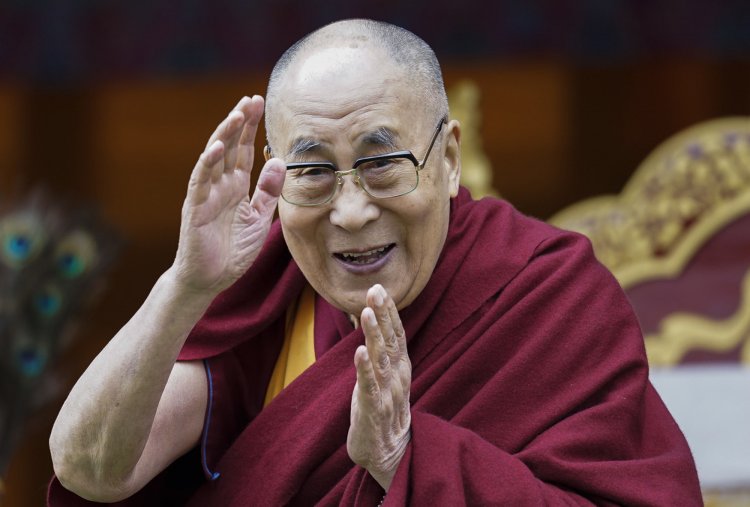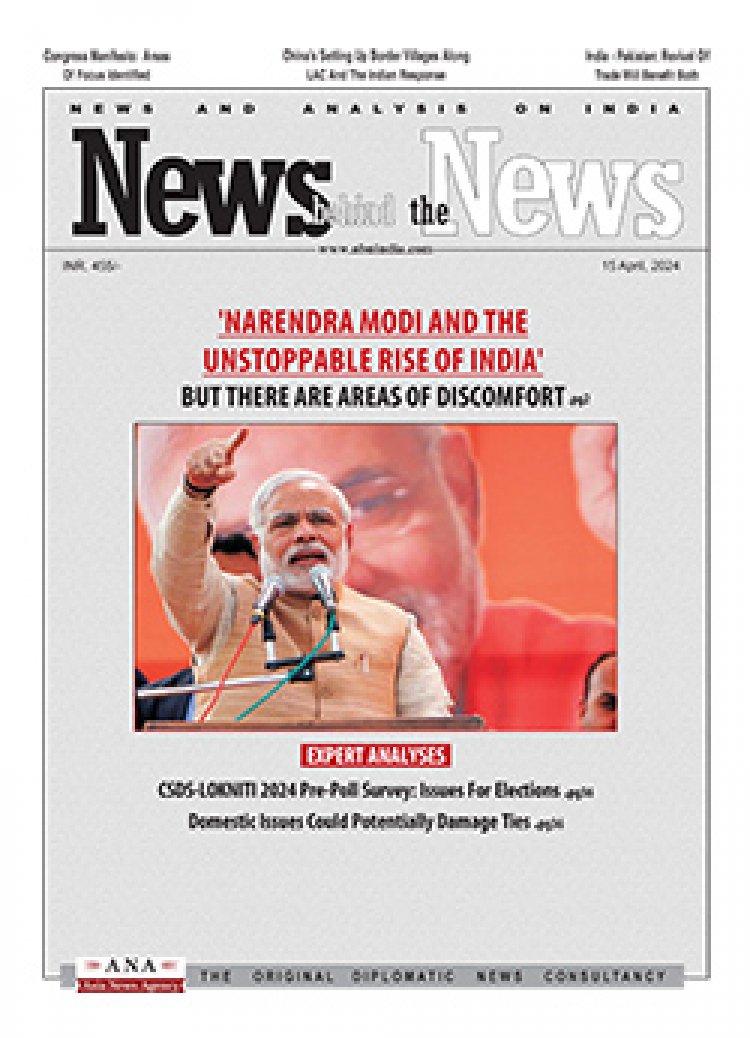PM Modi Congratulates Dalai Lama as he turns 86
STORIES, ANALYSES, EXPERT VIEWS

The Tibetan Buddhist community is celebrating the birthday of the Dalai Lama. The 14th Dalai Lama, Tenzin Gyatso, turned 86 last week. He was born on July 6, 1935, in Tibet and came to India in 1959.
Prime Minister Narendra Modi spoke to the Dalai Lama to convey his greetings to the Tibetan leader on his 86th birthday. Interestingly, the PM did not convey his greetings to the Tibetan leader last year amid India's border stand-off with China. There were no public messages congratulating Dalai Lama from the President or the Prime Minister last year. No wonder, analysts read much in PM Modi congratulating the Dalai Lama this year.
The Dalai Lama thanked the PM and his supporters and expressing his appreciation for India, where he has lived since he fled his homeland in 1959.
The succession issue
Dalai Lama is a highly influential figure of Tibetan culture, and his escape to India sparked major outrage in the region. China wants to control the appointment of the next spiritual leader of Tibet in order to firm up its grip on the Tibetan monastic order and in turn, control the region. However, the Tibetans believe that China is attempting to manipulate the selection process as a way to strengthen its grip over Tibetan people.
Identifying the next Dalai Lama: Tibetans believe the Dalai Lama has control over his re-birth and he can choose the body into which he is reincarnated. There are usually predictions about where and when a Dalai Lama will be reborn, but further tests and signs are required to ensure the proper child is found.
In the case of the 13th Dalai Lama, after his death, his body lay facing south. However, after a few days his head had tilted to the east and a fungus, viewed as unusual, appeared on the north-eastern side of the shrine, where his body was kept. This was interpreted to mean that the next Dalai Lama could have been born somewhere in the north-eastern part of Tibet, reported Asia Times.
Disciples also checked Lhamo La-tso, a lake that is traditionally used to see visions of the location of the Dalai Lama's rebirth.
The district of Dokham, which is in the northeast of Tibet, matched all of these signs. A 2-year-old boy named Lhamo Dhondup was found to be at the right age for a reincarnation of the 13th Dalai Lama, based on the time of his death. After further investigations, the search party identified the boy as the 14th Dalai Lama, who after taking over as the Tibetan spiritual leader changed his name to Tenzin Gyatso.
China consolidating its hold on Tibet
To consolidate its hold, Jyoti Malhotra (consulting editor, ThePrint) notes the Chinese issued a White Paper on Tibet in May this year, the third in Xi Jinping’s era that began in March 2013. Like the other two White Papers on Tibet, released in 2015 and 2019, this one emphasises the importance of “governing Tibet in the new era” under the supervision of the Chinese Communist Party (CCP).
According to Malhotra “there is the two-pronged ‘Xi Jinping strategy of governing the frontiers and ensuring stability of Tibet,’ which is why model villages are being developed all along the India-China Line of Actual Control, including near Doklam. These settlements are being built to watch out both for ‘pro-Dalai Lama infiltrators’ and act as a buffer between the CCP and the people.
“And there is the interesting shift in focus, away from disgracing the Dalai Lama and in favour of a discussion about his succession. Party control over freedom of religious belief has been emphasised, by invoking the 1997 document which noted that ‘approval of the reincarnation of the Grand Living Buddhas by the central government…is the key to safeguarding the normal order of Tibetan Buddhism’, besides a 2007 decree that said reincarnations must be approved by the government.” This means the “Chinese seem determined to prepare for their own successor to the Dalai Lama……”
A pro-active US approach to Tibet
The US has also stepped up its approach to Tibet. Exactly a month after the Chinese White Paper was released, the North American seat and personal monastery of the Dalai Lama, the Namgyal Monastery in Ithaca in New York state, announced that it was building a Dalai Lama Library “intended as a repository for the collected works of all 14 Dalai Lamas.”
The Namgyal Monastery also announced a $5 million fund-raising drive. Clearly, writes Malhotra “America’s powerful Buddhists have joined hands with both Democrats and Republicans in the US Congress to send a message to China that it will protect the trappings of the Dalai Lama – if the Dalai Lama himself cannot be protected – and not allow China to walk away with his sacred legacy.”
India sending mixed signals
India has been recently sending mixed signals on its Tibet policy. In his first term, Modi balanced his China-Tibet policy by inviting the former Tibetan prime minister-in-exile Lobsang Sangay to his oath-taking ceremony in 2014, met the Dalai Lama the same year and allowed him to go to Tawang, the birthplace of one of his key predecessors, the Sixth Dalai Lama. But, notes Malhotra, on the eve of the PM’s meeting with Chinese President Xi Jinping in Wuhan in 2018, the government ordered the cancellation of all events commemorating the 60th anniversary of the Dalai Lama’s arrival in India.
In Modi’s second term however, India used the Special Frontier Force comprising Tibetan refugees to capture the south bank of the Pinging Tso in the conflict with the Chinese.
News from Dharamshala is more troubling
But the news from Dharamshala is more troubling, according to Malhotra. “The transition from the old Sikyong, Lobsang Sangay, to the new, Penpa Tsering has not been peaceful. Sangay, a US citizen, has returned home, but not before roiling the waters in the Tibetan administration in exile. Thousands of young Tibetan refugees are leaving India for better opportunities abroad, especially to the US — resulting in a rapid depletion of the Tibetan diaspora in India, even as Tibetan schools and monasteries, established since the Dalai Lama’s arrival in 1959, are shutting down.
“Meanwhile, India’s intelligence community continues to believe the Karmapa Lama — the head of the Karma Kagyu sect, who fled Tibet 21 years ago for Dharamshala and who the Dalai Lama has recognised to be the genuine article — is a spy. Actually, the intelligence community cannot make up its mind — some insist he’s a Chinese spy, while others are more willing to trust’s the Dalai Lama faith in the younger monk.”
India needs to have a coherent Tibet policy
India needs to have a coherent Tibet policy because China is waiting in the wings for 62 years, since the Dalai Lama fled. “Significantly, India still holds several aces up its sleeve, including complete devotion to the Tibetan Buddhist leader in Himalayan communities across large swathes of the LAC; from Ladakh to Tawang, Indian Buddhists are recognisably India’s first line of defence.” But ‘Modi’s inability to cut through the chaff and rightfully claim the Dalai Lama’s legacy, who has often said he is a ‘son of India,’ will only strengthen Xi Jinping’s hands. Equally, allowing the US to take charge of the Dalai Lama’s sacred inheritance will create a big hole in India’s self-avowed determination to consolidate this very special influence.”
















